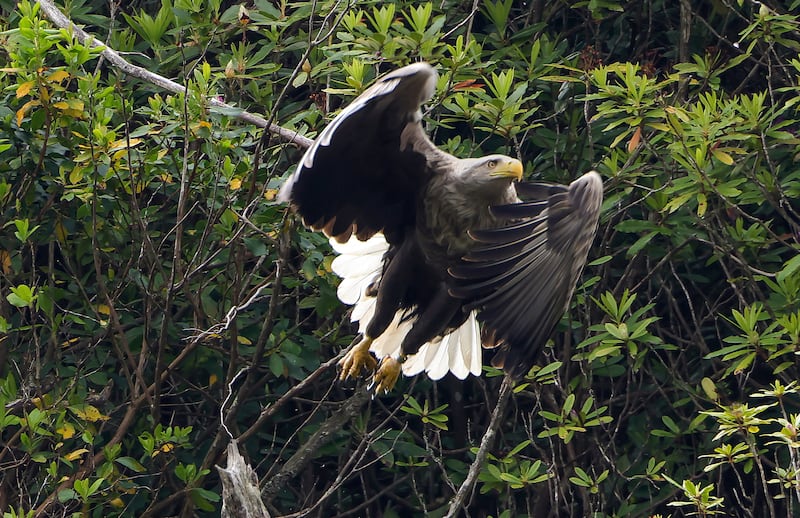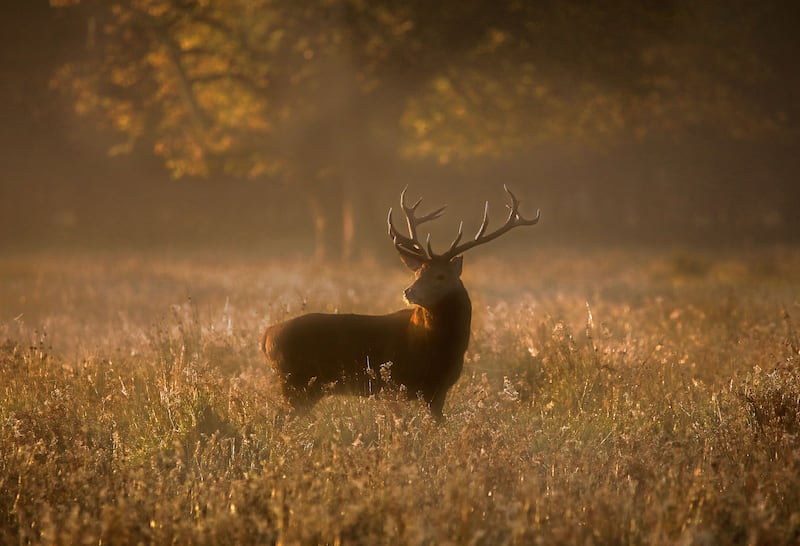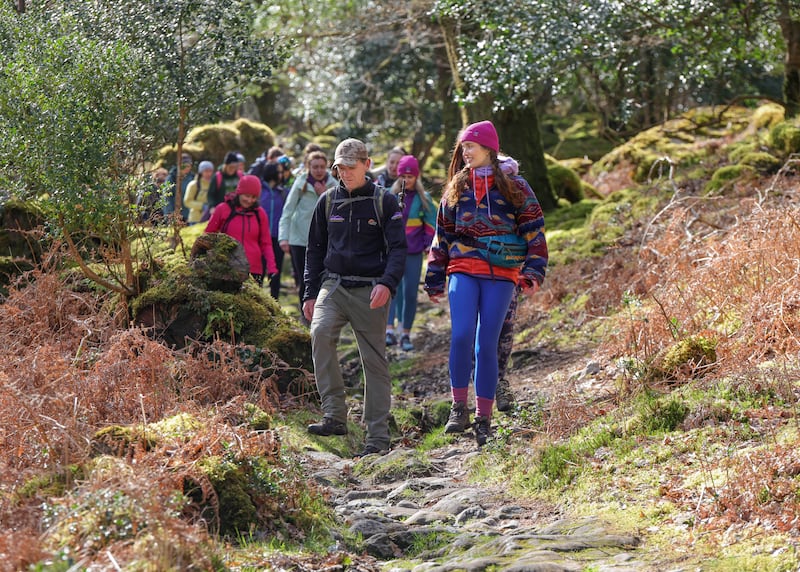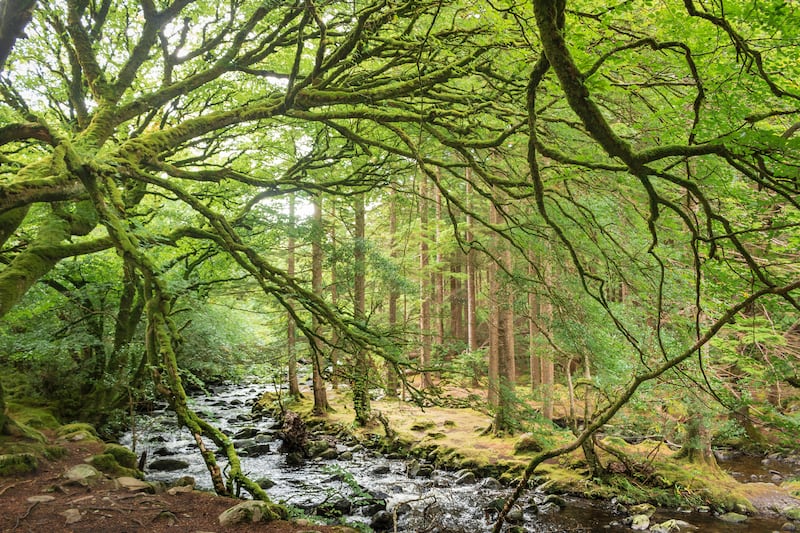This year is the 60th anniversary of Killarney National Park, the first such park to be designated by the State. It is rightly regarded as one of the most important semi-natural landscapes in Ireland and is a massive tourist attraction.
But promises for legislation to clarify its mandate remain unfulfilled, and its biodiversity management by the State agency responsible, the National Parks & Wildlife Service (NPWS), has been the object of much well-informed, ongoing science-based criticism over the years. The reintroduction of white-tailed sea eagles is a conspicuous recent success in the region, but one charismatic species, while good PR, is no substitute for healthy ecosystems.
Crucially, the NPWS has failed in Killarney (and elsewhere) to prevent the spread of Rhododendron ponticum, an invasive alien plant that prevents the regeneration of its most precious oak forest ecosystems, or to control the deer, sheep and goat populations that consume most surviving seedlings.
A promise to the Dáil in June by the Minister responsible for the NPWS, Malcolm Noonan, to prioritise effective rhododendron management has been met with scepticism. Similar commitments have not been honoured in the past. The recently published Native Woodland Strategy from Glenveagh National Park in Donegal points in the right direction, but again, Killarney has embraced, and then inexplicably abandoned, similar plans in the past.
READ MORE
Noonan undoubtedly deserves credit for helping push the EU’s vitally necessary Nature Restoration Law across the line in Brussels last summer, and for securing a truly remarkable 170 per cent increase in funding for the NPWS during this Government’s tenure. But implementing the new law will be tricky and soak up this money.

What is vital, and still very open to question, is that these funds should be guided, especially but not only in the case of rhododendron clearance in Killarney, by science. Increased expenditure without better management may just be good money thrown after bad.
Daniel Kelly, woodland ecologist and emeritus fellow of Trinity College Dublin, based in the botany department there, told The Irish Times in 2018 that “The great rhododendron disaster has taken place while Killarney is in the hands of the Irish nation. The nation deserves much better.” He stands over that statement today.
Noonan this month announced a public consultation, Your Parks, Your Say, inviting citizens and stakeholders to “inform the definition, purpose and management of our national parks”.
We asked several independent biodiversity experts and conservation advocates to send us their 60th birthday wishes for the park, bearing in mind these questions:
What has the park achieved for Irish biodiversity so far?
Has it failed to meet the necessary targets?
What does the park need to do to meet contemporary challenges?
From their responses below, it appears a radical change in approach is necessary. Noonan’s public consultation, if taken on board seriously by the NPWS, gives us all a chance to participate in answering these vital questions.
Dr Liam Lysaght, former Burren National Park ranger, chief executive of National Biodiversity Data Centre
Killarney’s designation as a national park has conferred on it the internationally recognised status it deserves as a landscape of the highest conservation value. It has served as an informal area for learning and scientific inquiry, particularly on species taxonomy and ecological field skills.
The introduction of positive conservation management measures has been hindered by being unable to address adequately the challenges of reducing grazing pressure, clearing rhododendron and improving water quality.
In my view, three things need to be done:
- Legislation to provide a legal basis for national parks;
- A greatly expanded budget ring-fenced for positive habitat management;
- Establish a well-resourced centre of excellence for biodiversity learning.
Brendan Dunford, co-founder of the Burren Programme, programme consultant for High Nature Value Services
Our national parks don’t exist in isolation, they are part of a broader, mainly agricultural landscape. It’s vital to the health of our parks that these adjacent landscapes are managed in a way that enables continual rejuvenation of the parks within them.
This requires myriad approaches, from using the parks as outdoor classrooms for local schools, as venues for local community events and as workplaces for local residents. We also need to really incentivise, and support, local farmers in these areas to “farm for nature” and create additional opportunities for them to benefit from their local National Park.
Pádraic Fogarty, ecologist and author of Whittled Away: Ireland’s Vanishing Nature
The forest at Killarney National Park remains among the most important places in Ireland for biodiversity. However, since its inception it has been viewed as a tourist destination first and a biological treasure trove second, leading to a dreadful lack of investment in the conservation of the forest itself.

As a result, what should be a showcase for nature conservation has become an indictment of the State and its unwillingness to tackle the biodiversity crisis. This is inexcusable but can be reversed. Excessive grazing and rhododendron must be tackled but there should be greater ambition, in particular, to greatly expand the Park and the forest.
Una Halpin, Trevor Halpin and Bill Quirke, Groundwork
In 1981, management in Killarney National Park welcomed and supported Groundwork, a group of volunteers who had a vision for tackling the problem of invasive rhododendron. By 2004, 350 hectares of the most ecologically valuable oakwoods of the park had been completely cleared and were being maintained free of flowering rhododendron.

After Groundwork was prevented from continuing the systematic scientific maintenance of the cleared woodlands, following a change of management policy in 2005, the woodlands became reinfested, and the habitat deteriorated.
There needs to be transparency and accountability over the new rhododendron management plan and compliance with legislation regarding Access to Information on the Environment.
Liam Heneghan, professor of environmental science and studies, DePaul University, Chicago
Two visits to Killarney National Park in the 1980s were pivotal for my development as an ecologist. On one visit, I was an early volunteer with Groundwork, tasked, with the blessing of the Park, to remove invasive rhododendron. The second visit, facilitated by the National Museum of Ireland (Natural History), was to collect chrysomelid beetles.
These assignments reflect two aspects of the Park’s missions: managing the unique natural resources in the park and facilitating education and learning. Since my first visit, there have been dozens of high-quality scientific publications on the park’s biodiversity, reflecting the exceptional opportunities it affords.

On the other hand, the management of the rhododendron problem has caused consternation in the conservation community. I remain cautiously optimistic about the future, but education, research, and the conservation of nature depend upon exceptional resource management.
Anja Murray, ecologist, broadcaster, author of Wild Embrace
Killarney National Park is a precious national treasure, more valuable than our greatest artworks. It contains some of the last remaining oceanic oak woodlands, otherwise known as temperate rainforests, which have been part of the Irish story for millenniums. The lakes and mountain habitats too, alongside exceedingly rare native Yew woodlands, make this an ecological mecca.

I am stunned that we, as a nation, have for decades been allowing invasive sika deer and rhododendron to destroy the woods, chomping away all attempts at a next generation of trees, smothering the woodland herbs and lower plant layers that sustain the plethora of wild bees, hoverflies, butterflies, moths and woodland beetles, among others. We urgently need to restore the damage we have unleashed and give nature in the national park a chance to flourish again.
Ray Ó Foghlú, Wild Atlantic Rainforest lead and farms programmes co-ordinator, Hometree
Despite its degradation during its lifetime, Killarney National Park’s very presence has served as an essential reminder of what the Irish uplands could be, a glimpse into our past and potential future. Nowhere else on this island can you find 3,000 acres of native woodlands – hyperoceanic forests of immense ecological richness bleeding into equally important blanket bogs and upland heath.
The State’s management of the park has failed in its duty to protect Ireland’s most precious piece of ecological heritage. That invasive plants such as rhododendron, and equally invasive mammals such as sika deer and trespassing sheep, are completely out of control serves as a powerful message about the State’s double standards in terms of how it manages its land and what it expects of other landowners.
The park needs long-term strategic objectives, the resources to achieve them, and accountability.
Eoghan Daltun, author and woodland manager
In 2009 I bought a 73-acre farm in Beara, west Cork, that was largely wild native rainforest. However, it was very severely overgrazed by non-native feral goats and sika deer, and infested by rhododendron. Removing all these invasive species allowed the most spectacular explosion of biodiversity and abundance, described in my book, An Irish Atlantic Rainforest (2022, Hachette).
In stark contrast, Killarney National Park has been in ecological meltdown for more than 50 years for the same reasons, with no young native trees, and rhododendron overwhelming vast tracts. The ecosystem is dying. If all invasive sika, goats, and rhododendron were removed, the native rainforest would erupt with life just as it has in my place. It’s really not rocket science.
Catherine Farrell, restoration ecologist, senior research fellow at TCD, supporting farming communities in restoring land for nature; former peatland restoration ecologist at Bord na Móna
Nature supports our very existence – providing us with wonderful contributions to our wellbeing – clean air, water, biodiversity, great beauty and calm, all of which can be found in Killarney. A national park is a place for that to be celebrated, an opportunity to showcase nature at her finest.
I visited KNP [Killarney National Park] as a novice peatland scientist in 1997, helping to monitor the effects of Kerry cattle grazing on peaty slopes. That nascent period exposed me to deeper aspects of park management, topics very far from the bustling centre of the park – Muckoss House, the bastion of the tourists – and tourism seems to remain the main focus of the park. It struck me back then that there didn’t seem to be a comprehensive plan for the biodiversity of the park, and that still seems to be lacking today.
Our national parks must have nature at the forefront of their concerns. It’s up to us – the State and her people – to support them to do so.
Declan Little, ecological lead Coillte Nature
This a very difficult question to answer without having all the facts to hand! I don’t know what the targets of its management plan are and if they have been achieved. In a general sense, I believe NPWS has caused confusion re biodiversity because in the 1980s/1990s there was considerable progress made regarding invasive species control and deer management but subsequently the row with Groundwork stalled the former. I am unsure if efforts to control deer numbers are being kept up. These two initiatives are central to improving biodiversity in the park.
If invasive species control is still stalled this means targets are not being met and are going backwards because invasives are seeding areas already cleared. This is a waste of resources already spent on the invasive species programme.
There needs to be an agreed approach with clear targets and multiannual funding to implement it. Meanwhile, farmers should be paid to maintain ecological services within and around the park.
Ella McSweeney, writer and broadcaster
When the US energy entrepreneur William Bowers Bourn donated the 11,000-acre Muckross Estate in Killarney to the Irish State in 1933, the government passed an Act to create Killarney National Park. The law stated the managers had full power to maintain the land “for the general purpose of the recreation and enjoyment of the public”.
Although the park was redesignated in the 1990s under national park criteria set down by the International Union for Conservation of Nature, it’s been impossible to shake off the original intention when it was established: the park exists for the benefits it offers humans.
And so, when a fire engulfed thousands of acres of the park in 2021, destroying some of the most remarkable and unique nature-rich areas left in Europe, what was shocking wasn’t that it happened – experts had been warning about it for years – but the lack of public outrage that vast swathes of this astonishing Unesco biosphere reserve had been lost.
Successive governments have yet to bother to legally define a “national park” and we have few, if any, laws to protect the unique habitats and wildlife within them. And so, perhaps we should start here: what are national parks? And how should we protect and restore them?
- Sign up for push alerts and have the best news, analysis and comment delivered directly to your phone
- Join The Irish Times on WhatsApp and stay up to date
- Listen to our Inside Politics podcast for the best political chat and analysis
















